Naomi House and Jacksplace hospices: the outstanding play team making every day count
Charlotte Goddard
Tuesday, February 27, 2018
Play and playfulness is central to the work of Naomi House and Jacksplace hospices for children and young people. Charlotte Goddard went to meet their award-winning play team to find out more.
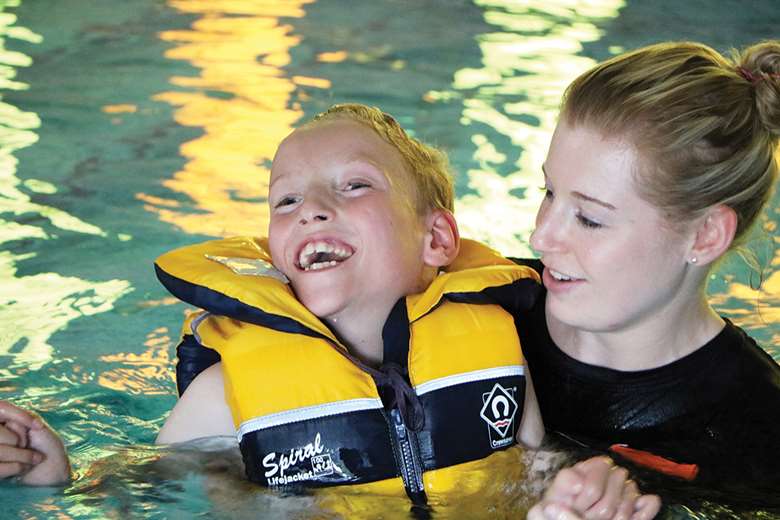
At the doors to Jacksplace and Naomi House hovers a model of a dragonfly. Here symbols are often used to communicate what is hard to say in words, and an approaching family knows the presence of the dragonfly model indicates the death of a child.
The twin hospices, based on a site in Hampshire, care for children and young adults with life-limiting or life-threatening conditions. They often have complex medical conditions, sensory needs, profound and multiple learning difficulties and may not communicate verbally. Children and young people may attend for a session, respite visits over a number of days, or for care at the end of their lives.
The dragonfly, and other symbols that gently warn others of the presence of grieving relatives at the settings, are part of hospice routine yet for the most part Jacksplace and Naomi House are joyous places to be.
Over the last few years the hospices have transformed the role of play from a filler activity to a key part of the care a child and young adult receives. The play and activities team, which won the Play Award at the 2017 CYP Now Awards, works in collaboration with the nurses and care staff to create a holistic care package.
"Without the play and activities team we would be lost," says Carol Ransome, head of Jacksplace. "They support the care team, they give ideas on how to interact and stimulate learning, and enable children to be as independent as possible while giving them pleasure. Play can also help in therapeutic ways, to help them understand what is happening to them. At Jacksplace a lot of our young people have very low confidence and are socially isolated, so the team is able to deliver activities that encourage social engagement with their peers, as well as learning new skills."
The play team has expanded in recent years and now comprises six members, bringing different skills to the table. Backgrounds and qualifications include youth work, mental health, education, IT, residential care, psychology and early child development. "They have a variety of experience and qualifications in youth work and early childhood studies," says team leader Huw Bromage. "However, something hugely important when trying to find a match for this team is they have to have that something special about them, the passion to make a difference in people's lives."
Entering Jacksplace through a high-ceilinged foyer with curving blue walls, a group of young people are arriving to spend the day at the hospice. The first play team members clocked on at 7.45am. "I'm setting up an arts activity for the day service, using a variety of different materials - crêpe paper, tissue paper, silky stuff," says deputy team leader Sara Crean. "We are setting out different types of paint brushes for different abilities, to include everyone."
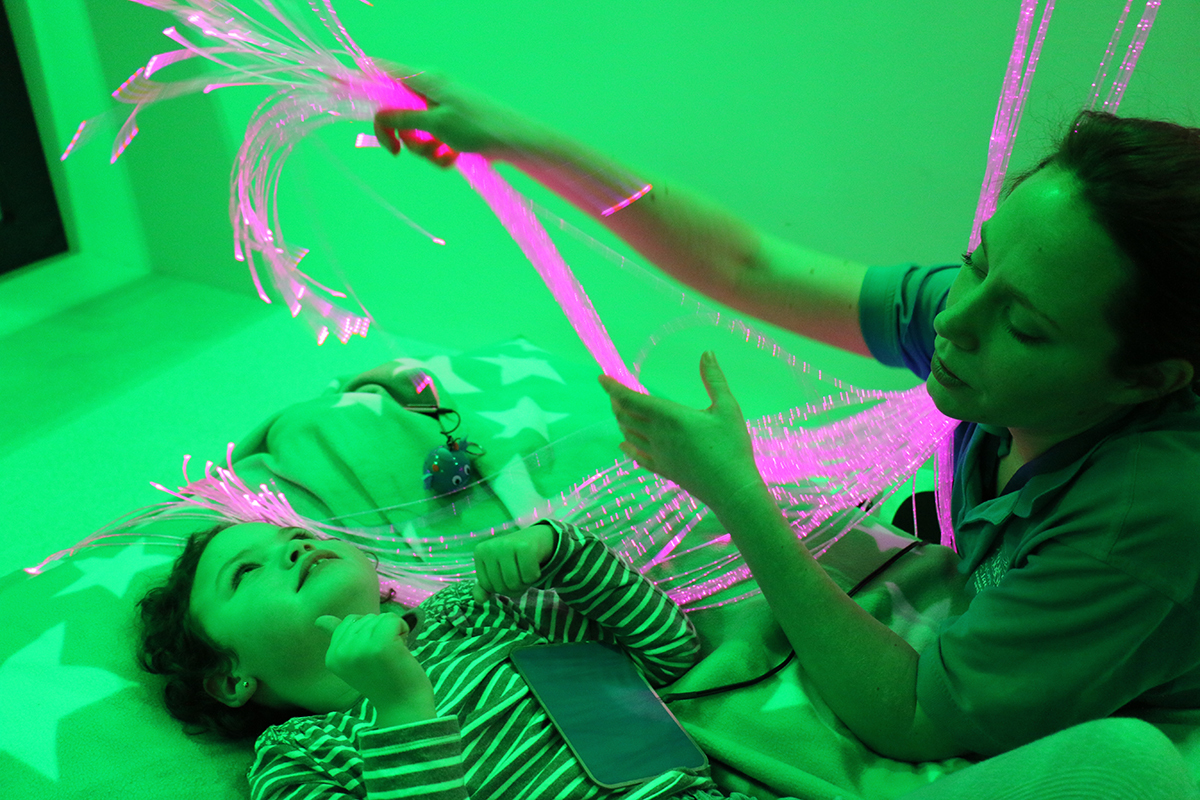
Sensory experiences
On Tuesdays, activities revolve around sensory experiences while Thursdays are geared towards a more cognitively able group, who will learn skills such as cooking. Today, there is a game of Jenga in progress and young people are making snowdrop collages with the support of play team members and volunteers. Another young person is using a Magic Carpet, which projects interactive images onto the table.
Claire Floyd, qualified youth worker and play team member, is a passionate advocate of the opportunities new technology can bring. She works closely with charity Lifelites, which donates equipment to the hospice. Eye gaze technology, for example, allows children who have limited mobility to play computer games, draw and communicate.
"One lad with Duchenne muscular dystrophy (DMD) withdrew into himself," relates Floyd. "We got a virtual reality system and because it is just controlled by a movement of the head, he was back on the Xbox having a conversation with one of the other lads. It's simple, but opens up this world to these young people."
DMD is the most common fatal genetic disease diagnosed in childhood, resulting in a progressive deterioration of muscle strength and function. Play team member Lucy Donaldson runs a morning group for boys with the condition. "We plan activities they will enjoy and that will get their confidence up," she explains. "As their condition progresses they will start needing equipment such as hoists and eye gazer technology. We introduce it now through play so it won't be so daunting when they need to use it."
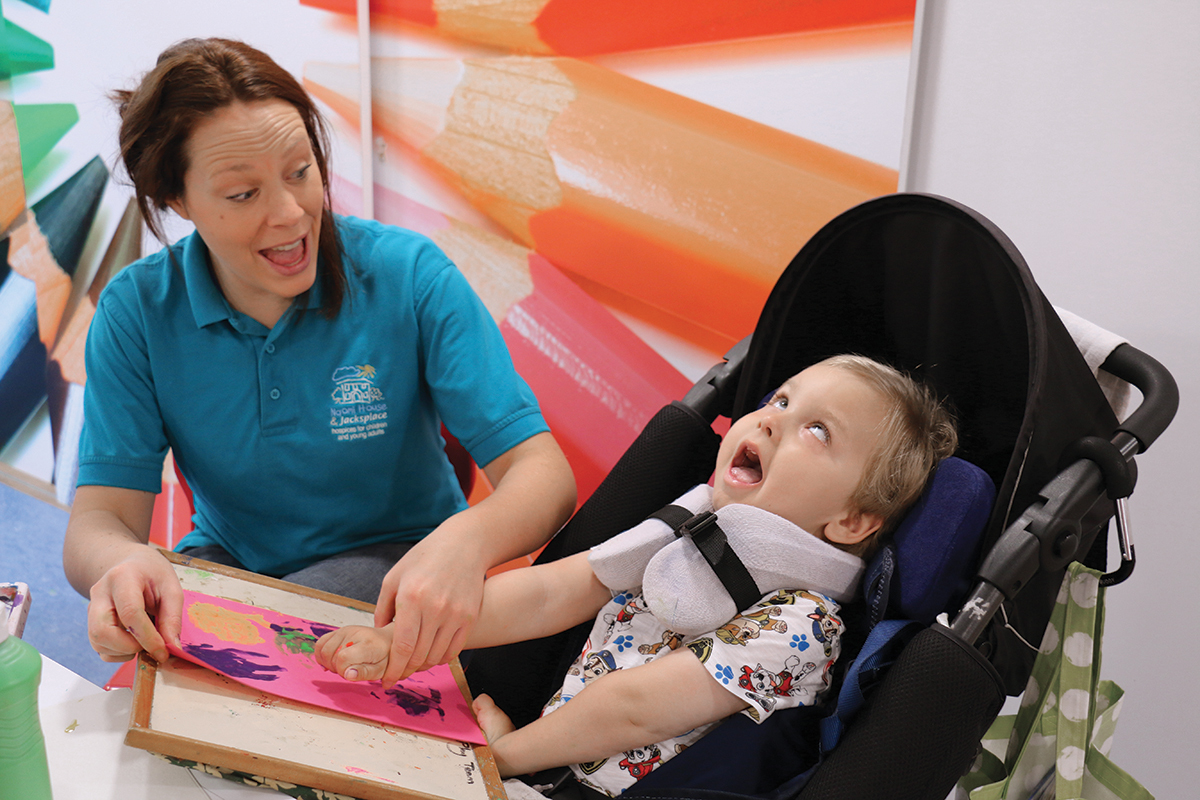
Play specialities
While the play team take the lead in different areas depending on their specialities, they work across the two hospices as needed. "We can go from working with a one-year old to working with someone who is 30, or we could be working with an adult with cognitive disabilities and with a cognitively able adult with physical disabilities in the same room, and make sure everyone is able to take part as much as they can," says Crean.
Funding for the expansion of the play team comes from the same place as funding for the rest of the hospice - a range of statutory grants, corporate donations, legacies and fundraising. Hobbycraft, for example, keeps the hospice supplied in arts and crafts materials.
Before a child or young person comes through the door, the team will have researched their likes, dislikes, development needs, methods of communication and educational needs. "We ask the child, young adult or family members what things they may like doing," says Bromage. "If they are not able to speak, the team has different ways to communicate with them, such as facial expressions, eye movements, noises, small movements and picture cards."
Choice is important when a child has no control over a lot of what happens to them. "It's important to give the children and young adults a voice," Bromage explains. "As we get to know the child, we may put a specific plan in place, such as a sensory room session in which they can use a variety of switches, including an audio switch, so any noise can change lights, sounds or smells within the room. I had one young boy learn that by clicking his tongue against his teeth he could change the whole colour of the room. The joy and happiness on his face will stay with me for a very long time."
When a child arrives to stay, the play workers personalise their bedroom with their favourite toys, decorations and bedding. In one of the bedrooms Donaldson is tying fluttery bits of ribbon onto a fan for five-year-old Matthew, who loves the movements they make in the wind. Matthew likes the fan to be turned on and off and the team have rigged it up so he can control it while he is having treatment from a nurse.
"We can concentrate on the children having a good time while the care staff write the important notes and go and prep feeds," says Crean. The team trains other staff members in play techniques, and supports the community team by maintaining a "pick and mix" cupboard of activities they can take when they visit children in their homes.
"The play team gives us different ideas, and all the children we go out to have their care plan that tells us what they like and don't like," says Sandra Feltham, community carer. "I might take a lot of different things like board games, jigsaws, arts and craft, sensory lights, and they can make a choice. They might have cerebral palsy, epilepsy, hearing or vision impairment or challenging behaviour but we will always adapt our activities around that. The in-house play team have different arts and crafts activities every week so whatever is going on that week we might take with us on our community visit."
Over in Naomi House a play worker is laying out toys and sensory equipment on the floor of a spacious room that resembles a nursery. Play team member Tasha Harman comes past with nine-year-old Evie, who is going swimming in the hydropool. Most of the children and young people cannot attend mainstream pools, since they are vulnerable to infection and dependent on an array of medical equipment. Nurses and carers who assist in swimming sessions are directed by the play team and undergo the team's mandatory swim training.
Young people are sitting in the hub and dining room at Jacksplace, known as Las Vegas, when there is a patter of feet and Cossack the black Labrador comes trotting in. Cossack is a Pets As Therapy dog and one of a range of animals - including snakes - whose visits to the hospice are organised by the play and activities team. The team organises a range of other visitors as well, including music and poetry therapists.
Brothers and sisters are part of the life of the hospice, and the play team help nurture sibling relationships, as well as meeting specific needs siblings might have. "We try to organise activities the siblings and child can do together," explains Donaldson. Inclusive activities might include squirting paint from a syringe, or using the bikes in the garden, some of which are designed to carry wheelchairs.
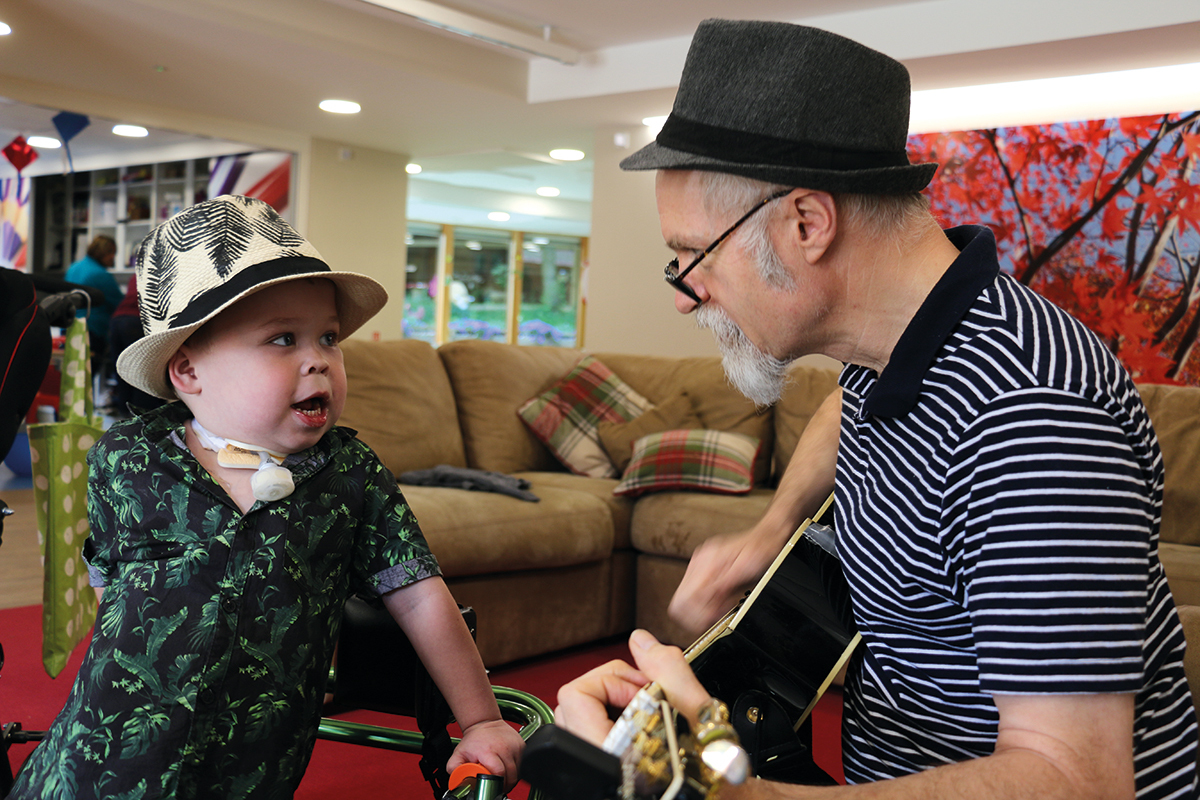
Memory making
Play is particularly important at the end of a child's life. "Once a child comes in for end-of-life care, it may mean that they have just hours or days left," says Bromage. "Memory making is essential to the family during the hardest of times. We help make those memories, so they can hold on to them forever. Memories have included seeing Santa all together at Christmas and painting personalised T-shirts."
A painted river flows along the walls of Jacksplace, eventually arriving at the Ocean Suite. Over at Naomi House the same room is known as the Butterfly Suite. Today this calm space is empty, but this is where a family can spend extended time with a young person after they have died. As with the bedrooms, the play team will fill this neutral space with the things the young person or child loved.
"Once the child has died, we make sure we spend time with the siblings and interact through play in a sensible and respectful manner, thus giving the parents time to say goodbye on their own," says Bromage. "The importance of our collaborative working with carers, nurses and the family support team is key during this time."
"This is the hardest part of the job," says Donaldson. "Being able to support family and siblings at that time, as well as providing a fun environment for the other parts of the house is difficult sometimes, although we manage it." If team members are struggling with a particular situation they can ask to move to the other hospice, and the family support team is available to support the play workers as well as families.
The last members of the play team usually clock off at 8pm - but sometimes stay late. Jack's Cabin in the hospice garden, complete with TV and juke box, can act as a "pub", allowing young people to have a night out without leaving the hospice. The team has also launched a buddy scheme, Jack's Mates, with meet-ups every four to six weeks at a bar or similar.
"We phone ahead, and see if we can have chairs removed in advance so young people can come in with their wheelchairs," says Crean. The bar trips are for over-18s, for obvious reasons, but the team also arranges day trips such as skating or visits to the zoo, and special events such as Santa and the Easter Bunny arriving by helicopter, or sports days with obstacle courses.
You can never be sure what is around the next corner at Naomi House and Jacksplace. "The other day I came across children firing Rice Krispies into the chaplain's mouth, using a hairdryer," says marketing manager Keith Wilson. "I have never seen such a mess. The children were loving it, absolutely howling with laughter." That laughter is the key to the play team's work. "I can't stop what is going to happen," says Claire Floyd. "But I can make it good fun getting there."
- The 2018 CYP Now Awards will open for entries at the end of March at www.cypnowawards.com
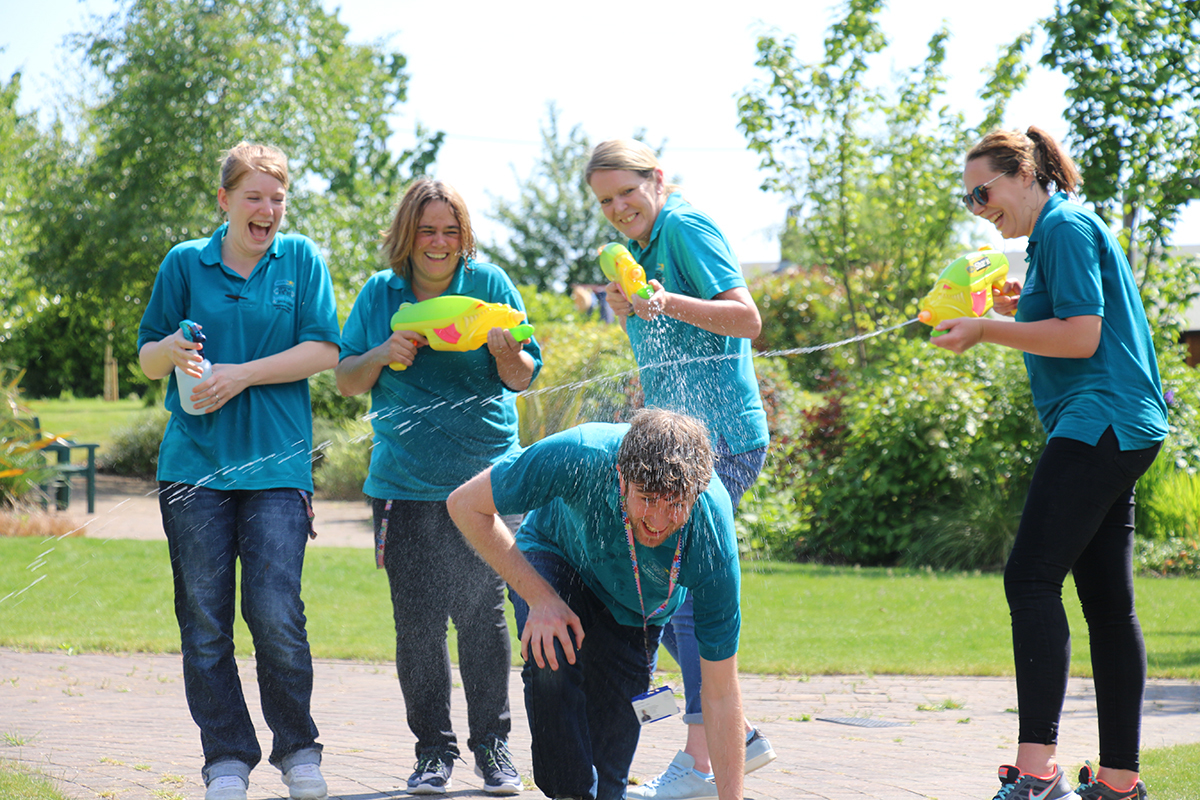
FACTFILE
- Naomi House opened in 1997 following a campaign by the local community to raise the necessary £5m. Jacksplace opened on the same site in 2010, funded by a bequest from businessman Jack Witham
- Naomi House caters for children under the age of 16 and Jacksplace for young people between 16 and 35
- The hospices are built on an estate once owned by film magnate J Arthur Rank. The land, near Winchester, was offered by the Cornelius-Reid family in return for an annual rent of a dozen red roses every midsummer
- Naomi House supports 297 children and Jacksplace supports 137 young adults. Last year the hospices provided 1,939 bed nights of care at Naomi House and 1,684 at Jacksplace, and cared for 17 children and five young adults at end of life or post-bereavement
- The hospices cost £8.5m a year to run, less than 15 per cent of which comes from statutory sources. Funding sources include a network of shops, corporate partners like Ryanair and Vodafone, legacies and fundraising activities
- The hospices employ 183 staff
- The play team's annual budget is less than £40,000 excluding staffing costs
- Many referrals come from University Hospital Southampton, but GPs also make referrals and families can refer themselves
- The play and activities team consists of: leader Huw Bromage, deputy leader Sara Crean, and team members Anne-Marie Boyne; Lucy Donaldson; Tasha Harman and Claire Floyd
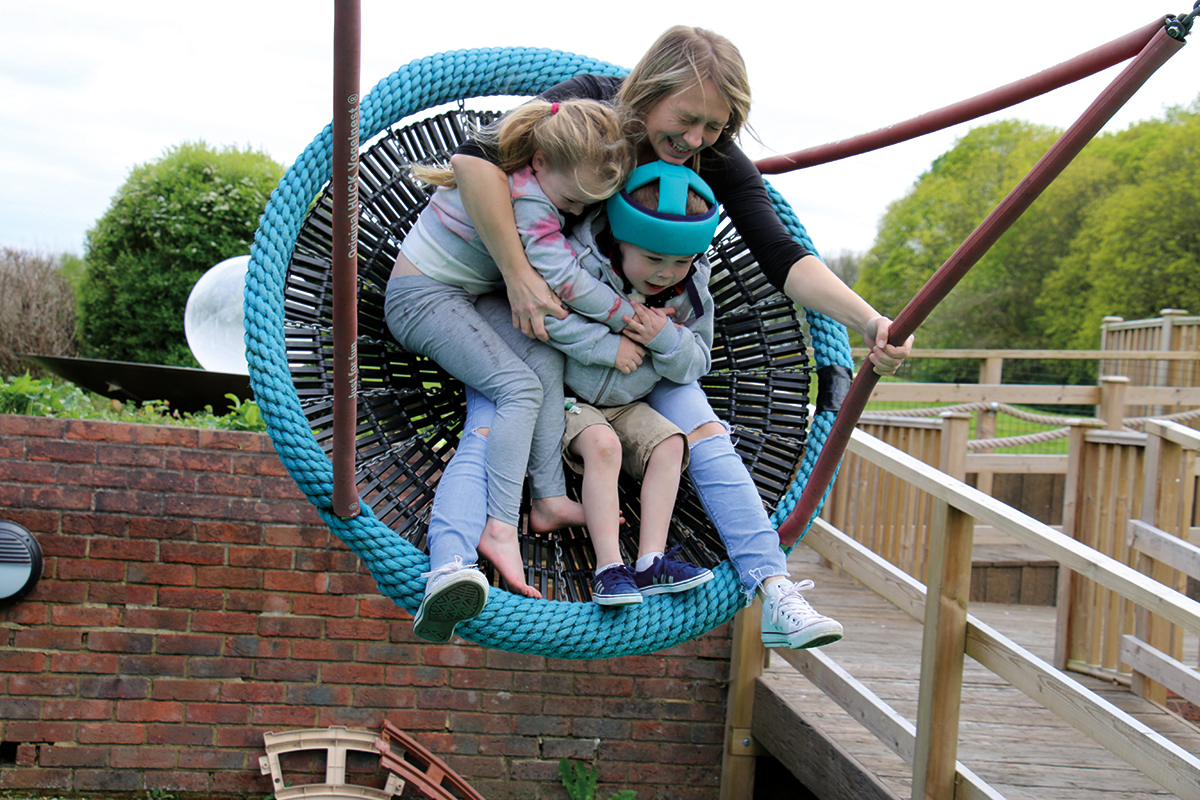
Mikey plays with his family while at Naomi House
For Mikey the hospice is just a fun place to go
Five-year-old Mikey Strachan sits on the edge of the pool, squirting his older sisters with water toys, while they swim. Later he will play outside in an electric car that allows him to join in as his siblings pedal around the garden, or he might make some cakes with the play team.
Mikey struggles with breathing when he tries to do too much, so activities must take place in short bursts. He needs constant suctioning to clear his airways and can suddenly stop breathing, so he must never be left alone.
Mikey's condition is as-yet undiagnosed. His legs can give way so he has a walking frame to help him and also uses a wheelchair. When he was nine months old he underwent surgery for a tracheostomy. He receives his nutrients, vitamins and minerals intravenously.
Mikey is staying at Naomi House with his family for four or five days. Sometimes he comes by himself for up to three days to give his family some respite. While at Naomi House he continues to have medical treatment, but his mother Chevonne says he thinks he is on holiday. "They take away the medical side," she says. "He has lots of treatment while he is there but he doesn't even notice he's having it, the play team keep him entertained and the nurses do it around them."
Mikey's condition can be tough on his siblings. "They get very worried about Mikey, but here they can be normal children, not caring for their brother," she says. "My oldest daughter has a few behavioural issues due to Mikey's medical needs - she gets cross with people touching him - but the play team has sat with her and talked to her about this. They are amazing."
"When we are here not everything centres around Mikey's health - it is just a fun place for us to go," she continues. "I can't take my children swimming in a public pool because Mikey isn't allowed, so at Naomi House we can still be with Mikey but someone can watch him while I go in the pool with the other children."




